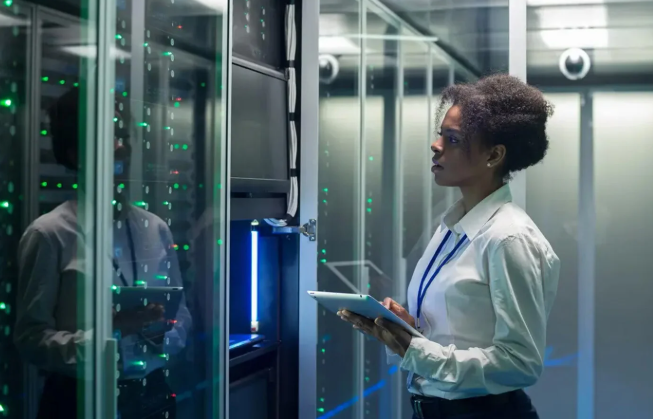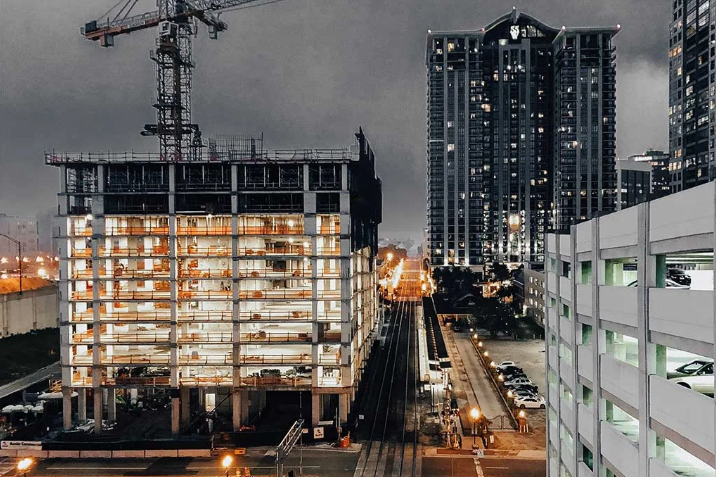In today’s digital world, data is as valuable as oil, and hyperscale data centers are the powerful giants that keep everything running smoothly. But what exactly is a “hyperscale data center definition“? As technology and businesses grow quickly, understanding these massive data hubs—built to be scalable, efficient, and reliable—is becoming more important.
Whether you’re a tech enthusiast interested in the latest infrastructure or a business leader looking to use cloud services more effectively, this guide will break down hyperscale data centers. Let’s explore what they are, their key features, their benefits, and how they will shape the future of technology!
What Is a Hyperscale Data Center?
A hyperscale data center is a large facility designed to handle the massive computing needs of major tech companies like Google, Amazon, and Facebook. These centers are built to support large-scale, scalable applications that power cloud computing, big data, and artificial intelligence (AI) services.
Key Traits of Hyperscale Data Centers
Massive Size: Hyperscale data centers usually contain more than 5,000 servers and span over 10,000 square feet.
Scalability: They are designed to quickly expand to meet growing demands, allowing for large-scale workloads.
Automation: Hyperscale data centers use automated systems to manage resources, monitor performance, and keep operations running smoothly.
How They Differ from Traditional Data Centers
Scale: Hyperscale data centers support thousands of servers, while traditional data centers have fewer servers and are smaller in scale.
Flexibility: Hyperscale data centers are highly flexible and scalable, while traditional ones have limited scalability.
Management: Hyperscale centers use centralized and automated management, whereas traditional data centers rely more on manual or semi-automated management.
Purpose: Hyperscale centers are built to handle cloud computing and big data, while traditional centers serve specific organizational needs.
Hyperscale data centers are designed for companies needing significant computing power and storage to run large-scale services efficiently, unlike traditional data centers, which are typically smaller and more specific in function.
Why Hyperscale Matters
Hyperscale data centers play a key role in today’s digital world because they can handle huge amounts of data and support fast-growing technologies. Here’s why they’re important:
Meeting the Growing Need for Data: As more people use digital services, there’s a bigger need to store and process data. Hyperscale data centers are built to handle this large demand quickly and efficiently.
Powering Cloud Services, AI, Big Data, and IoT: These data centers support major technologies like cloud computing, artificial intelligence (AI), big data analytics, and the Internet of Things (IoT). Their size and speed help these systems run smoothly.
Helping Businesses Grow Quickly: Hyperscale data centers let companies expand fast without building new systems, making it easier to grow and stay ahead in the market.
Hyperscale data centers are a key part of modern technology. They make digital services faster, more efficient, and ready for future growth.
Core Features of Hyperscale Data Centers
Hyperscale data centers are built to handle massive amounts of data and computing power. They are designed to be fast, efficient, and reliable. Here’s what makes them special:
Modular Design & Powerful Servers: They are built using modular units—like building blocks—so it’s easy to expand them as needed. These centers also use high-density servers, which means a lot of computing power is packed into a small space.
Smart Cooling & Energy Saving: Hyperscale data centers use advanced cooling systems, like liquid cooling and improved airflow, to manage heat efficiently. This saves energy and helps protect the environment.
Backup Systems & Reliability: To keep running all the time, even if something breaks, they have backup power, cooling, and network systems. This means less downtime and more reliability.
Software-Controlled Management: They use smart software to manage all the hardware. This allows them to quickly adjust resources like storage and network capacity to meet changing needs.
These features help hyperscale data centers support the huge demands of cloud services, big data, and other high-tech applications.
Why Hyperscale Data Centers Matter for Businesses
Hyperscale data centers provide major advantages for tech-driven companies by offering scalable, efficient, and reliable support for their digital operations.
Easy to Grow and Adapt: Hyperscale data centers can easily scale computing power, helping businesses grow without building new infrastructure.
Lower Costs at Large Scale: Hyperscale data centers can offer services at lower prices because they purchase equipment and power in bulk and manage resources efficiently. This helps businesses save money by reducing operational costs.
Always On, Even in Disasters: They’re built with backup systems to keep things running smoothly, even during failures or emergencies. This helps prevent downtime and keeps operations going.
Global Access and Fast Setup: Hyperscale data centers are located all over the world, so businesses can easily start services in different areas. This helps users get faster service and better performance, no matter where they are.
Hyperscale data centers offer reliable, affordable, and flexible support for global business and tech operations.
Challenges of Hyperscale Data Centers
Hyperscale data centers are essential for powering the digital world, but they also come with serious challenges that need attention:
High Energy and Water Use
Hyperscale data centers use large amounts of electricity and water, which can strain local power and water resources.
Security and Privacy Risks
Hyperscale data centers are huge and complex, making them more susceptible to cyberattacks. Managing security across so many systems can be challenging. Additionally, these data centers must comply with various privacy laws in different countries, which adds another layer of complexity to protecting sensitive data.
Location and Infrastructure Challenges
Building hyperscale centers requires a lot of land, strong power sources, and cooling systems. In some areas, local communities push back due to concerns about noise, land use, or environmental impact. Expanding into new regions also brings stricter rules on security and data privacy.
To ensure hyperscale data centers can grow responsibly, we need to address their environmental impact, security risks, and infrastructure challenges.
Conclusion: The Importance and Challenges of Hyperscale Data Centers
Hyperscale data centers are crucial to the digital world, powering everything from cloud computing and AI to big data. Their ability to scale, operate efficiently, and provide reliable services helps businesses grow without extra infrastructure. With features like modular design, smart cooling systems, and automated management, these data centers meet the growing demand for data storage and processing.
However, hyperscale data centers face challenges like high energy and water usage, which raise concerns about sustainability. Their complexity also creates security risks. Expanding these centers is tough due to location and infrastructure limits, and they can face local opposition because of environmental concerns.
Hyperscale data centers are key to advancing technology, but their success relies on businesses and policymakers working together to solve security issues.


